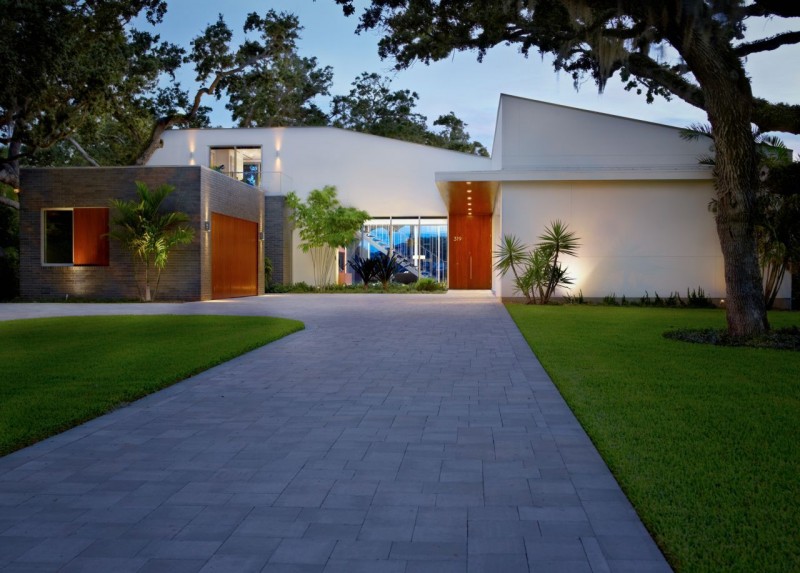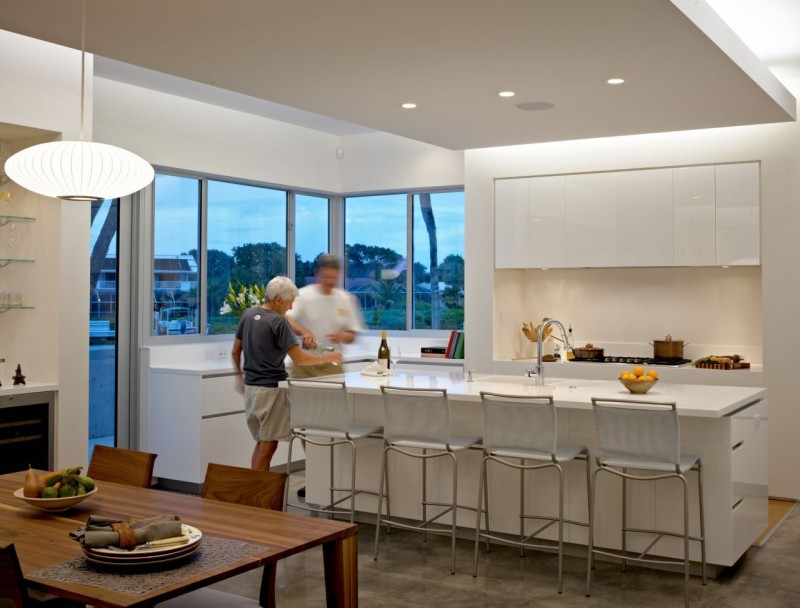Barrier Island House - In 2012, Sanders Pace Architecture did completely a house remodel that
is located within a waterfront neighborhood of modest 1950’s house in Vero
Beach, Florida, USA.
The project desired to construct a new structure with the same footprint and scale of the existing building. A respect to keep the natural oak tree as possible and to use the water view in another side, beside accommodates the single family’s needs were the idea of a new construction. This Contemporary house includes concrete with CMU infill were dictated the hurricane codes, uses stucco, dark brick and cedar as the material cladding and also glass gives the beautiful outdoor panorama could seen from inside. Here are some pictures and the architect’s description about the contemporary house called Barrier Island House:
The project desired to construct a new structure with the same footprint and scale of the existing building. A respect to keep the natural oak tree as possible and to use the water view in another side, beside accommodates the single family’s needs were the idea of a new construction. This Contemporary house includes concrete with CMU infill were dictated the hurricane codes, uses stucco, dark brick and cedar as the material cladding and also glass gives the beautiful outdoor panorama could seen from inside. Here are some pictures and the architect’s description about the contemporary house called Barrier Island House:
SandersPace Architecture describes
Barrier Island House:
“This project is located within a
waterfront neighborhood of modest 1950’s era houses alongside many more recent
supersized replacements. Our process began by evaluating the client’s goals
with their existing property in order to determine whether or not the existing
single family residence on the site could accommodate their needs.
After an early visit to the site it
was determined that any improvement to the existing residence would require the
demolition of the original terrazzo slab on grade, perhaps the property’s best
asset.
Once the decision to replace the
existing structure was made a series of design options were explored which
maintained the scale and character of the original house while accommodating
new programmatic goals including a loft level, a detached workshop, and an
abundance of outdoor space.
A desire to preserve as much of the
natural vegetation on the site as possible including many beautiful live oak
trees meant containing new construction within the footprint of the original
building.
Improved efficiency within the
layout allowed us to provide the same interior program within a smaller amount
of conditioned space, again a nod to the scale and character of the original
historic neighborhood. Hurricane codes dictated our structural system which
consisted of concrete with CMU infill.
As with most projects within this
context, stucco clads the primary volume of the house. Dark brick and cedar are
used as secondary materials cladding accessory volumes and surfaces while an abundance
of glass lends transparency to the primary public spaces while offering
uninterrupted views to the waterway beyond.”


















.jpg)



.jpg)



